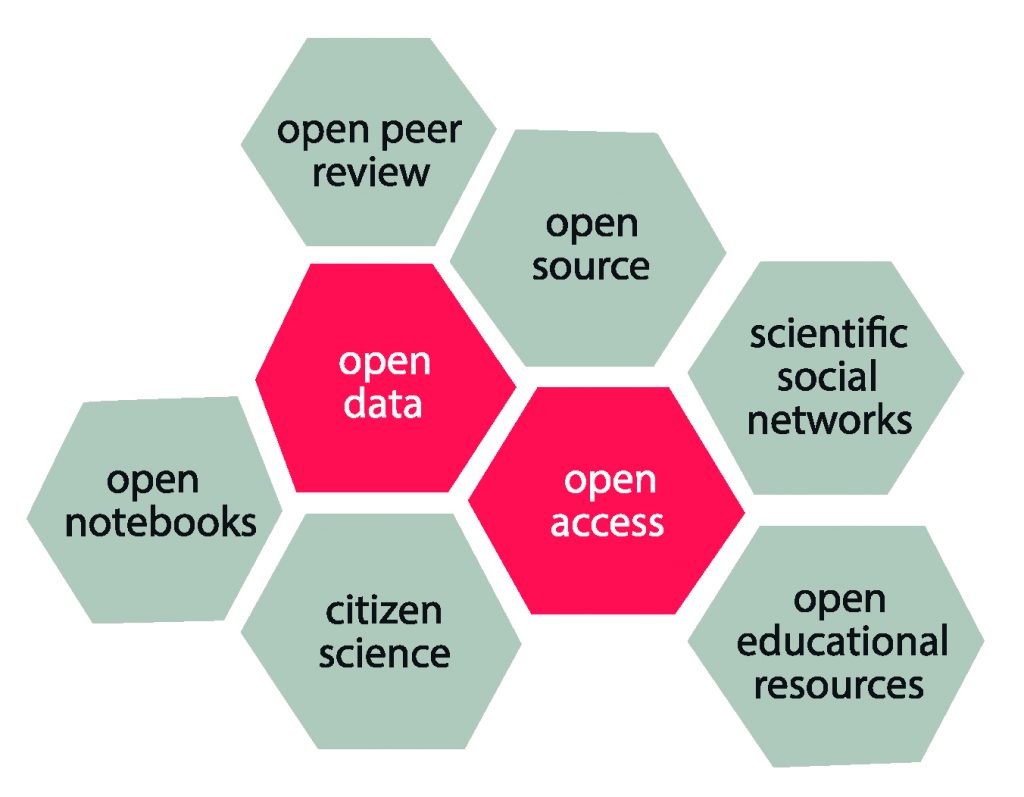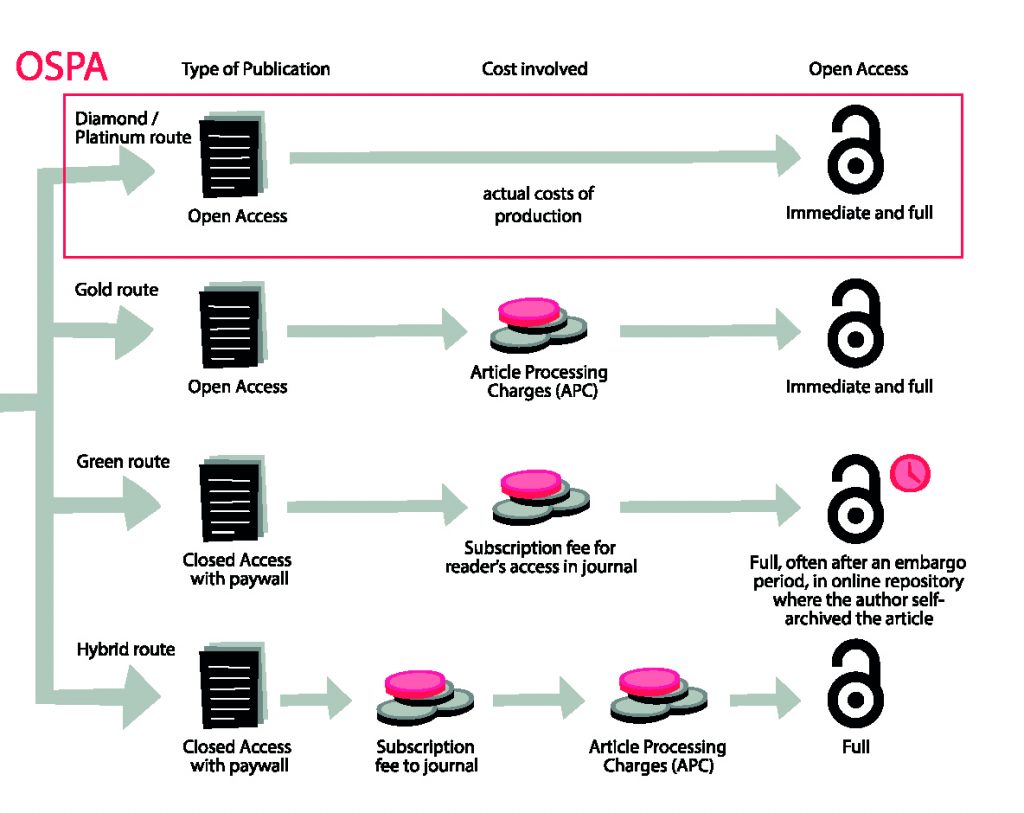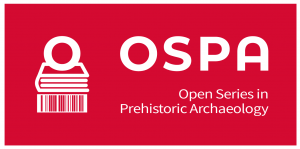Caroline Heitz, Martin Hinz, Mirco Brunner, Julian Laabs and Albert Hafner
‚Freiheit ist immer auch die Freiheit des Andersdenkenden’ –
‚Freedom is always the freedom of those who think differently’
Rosa Luxemburg (1871–1919)
The freedom to think differently and to express one’s thoughts is not only an indispensable principle and condition of democracy but also of any form of scientific reasoning and thus sciences and humanities as such. The need for freedom in expression beyond unequally distributed relations of power, which is emphasised in the quote of Rosa Luxemburg, a revolutionary, democratic socialist and pacifist of the European labor movement in the early 20iest century, resonates today in the current Open Science movement which is a fundamentally democratic, bottomup enterprise of the scientific community to foster transparency, reproducibility, reusability and open communication in research (Fig. 1) (Berlin Declaration)
With the launch of the Open Series in Prehistoric Archaeology (OSPA) by the publication of this first volume at hand we as editors have thus made a long-cherished wish and a necessity in the research landscape, a reality: The vision of the first Open Access and Open Data book series without pay wall and embargo (diamond/platinum and the gold route, see Fig. 2) that enables the peer-reviewed publication of international highquality research in the vast field of European prehistoric archaeology! In the spirit of Open Science, both innovative, data-driven, empirical research as well as novel theoretical and methodological approaches will be made freely accessible to researchers worldwide in sustainable digital and analogue forms of publication. With this concept the series stands for free accessibility to knowledge and research results beyond financial limitation, institutional constrains or national borders, the unrestricted exchange between research communities, for the transparency and reproducibility of the research processes and hence the independence and freedom of thought.
Open Science is an umbrella term for all attempts aiming at removing the barriers to the exchange and sharing of knowledge output in every stage of the research process, including resources, methods and tools as wells as data and results. Since beginning of the 21st century, digitalisation has decisively increased and along with it the opportunities for exchange and openness in spreading scientific contents. Furthermore, the internet with all the different forms of (social) media it hosts has fundamentally changed the practical and economic realities of distributing knowledge and can be understood as part of a tech-based worldwide democratisation process. For the first time ever, a global and interactive representation of human knowledge can be constituted along with the guarantee of worldwide access. The Open Science movement aims at using these opportunities offered by the digital turn in order to make all components of the scientific process openly accessible, traceable and re-usable for the scientific community, society and the economy via the Internet (Swiss Academies of Arts and Science 2019.). Hence the Open Science movement triggers change in good scientific practice and this series, OSPA, will be part of it.

The four basic principles of Open Science are transparency, reproducibility, reusability and open communication whereby Open Access and Open Data publication are at the heart of its attempts. Open Access as such means already a democratization of the research process. Using Creative Commons (CC) licencing systems (Creative Commons) ensures that authors retain the copyright of their publication with no restrictions of reusing them instead of transmitting them to the publishers. Research results thus can be better reached fostering the transnational and transdisciplinary exchange as well as the re-evaluation and the reuse of findings. This has never been more important than in the time of the Covid-19 pandemic, when open access publications lead the only possible way to continue to do research despite the restriction on travelling and to assembly in public spaces such as universities and libraries. Beyond that, OA online publications are helpful tackling another current societal challenge, that of global warming, by reducing carbon emissions per publication significantly.
The Open Access routes of publication are now supported or even required by research funding agencies worldwide. This policy changes the way in which research is evaluated in the long run leading to a levelling out of the imbalanced power relations. Traditionally, the success of research projects and the fundability of the researches were only measured by publications in high-ranking predatory journals that dominated the scientific community but were largely financed by public money. The Open Access publication policy has the ambition to self-empowering the researchers by regaining some control over their publications and by overcoming the dictate of a few large international publishers and thus the evaluation of early career scientists beyond financial restrictions. The Quality of research will not longer be measured by the ranking of journals or series that are governed by commercially driven publishers but its consents.

This is in line of the San Francisco Declaration on Research Assessment (DORA) which recommends funders to consider the scientific quality, value and impact of their entire research output (also datasets, software etc.) in addition to research publications. Compared to former printed publications, Open Access online publication also answer to this need. Open Access schemes of publication that incorporate also an Open Data possibility not only allow to publish the results and interpretations of the once conducted inquiries and analyses with the citied literature. Reaching much further also the datasets with the respective metadata (data about data) and the scripts or the software used to conduct the analyses can be made freely available too on a repository by using any kind of Persistent Identifiers (PIDs), as e.g. the DOI (Digital Object Identifier) or ORCID (Open Researcher and Contributor ID). That allows other researchers to scrutinise them so that judgments can be made about the reliability and the competence of those who created the research results in terms of Reproducible Research (Marwick 2018). Furthermore datasets can be reused in the scope of other research projects, trans- ferred to other data bases allowing to apply new approaches of data min- ing in the future. Research thereby is shifted form individually conducted task of a few to a transparent open social practice of many.
Coming from different fields of prehistoric archaeology, we as editors are united by the conviction that research should unfold its creative dynamic in ever growing networks of scientific communities that overcome any spatial, disciplinary, institutional, political or economic limitation. In the long run, there is hope that Open Access and Open Data publications such as the volumes of the OSPA series lead to a democratic revolution in science and humanities and hence in archaeological research too.
References
Berlin Declaration https://openaccess.mpg.de/Berlin-Declaration (10.5.2020).
Creative Commons https://creativecommons.org/licenses/by/3.0/ch/(10.5.2020).
Declaration on Research Assessment (DORA). https://sfdora.org/ (10.5.2020). Digital Object Identifier https://www.doi.org/ (10.5.2020).
Marwick 2018 https://www.practicereproducibleresearch.org/case-studies/ benmarwick.html (10.5.2020).
Open Researcher and Contributor ID (ORCID) https://orcid.org/ (10.5.2020).
Swiss Academies of Arts and Science 2019 http://www.akademien-schweiz.ch/index/Schwerpunkte/ Open-Science.html (10.5.2020).
